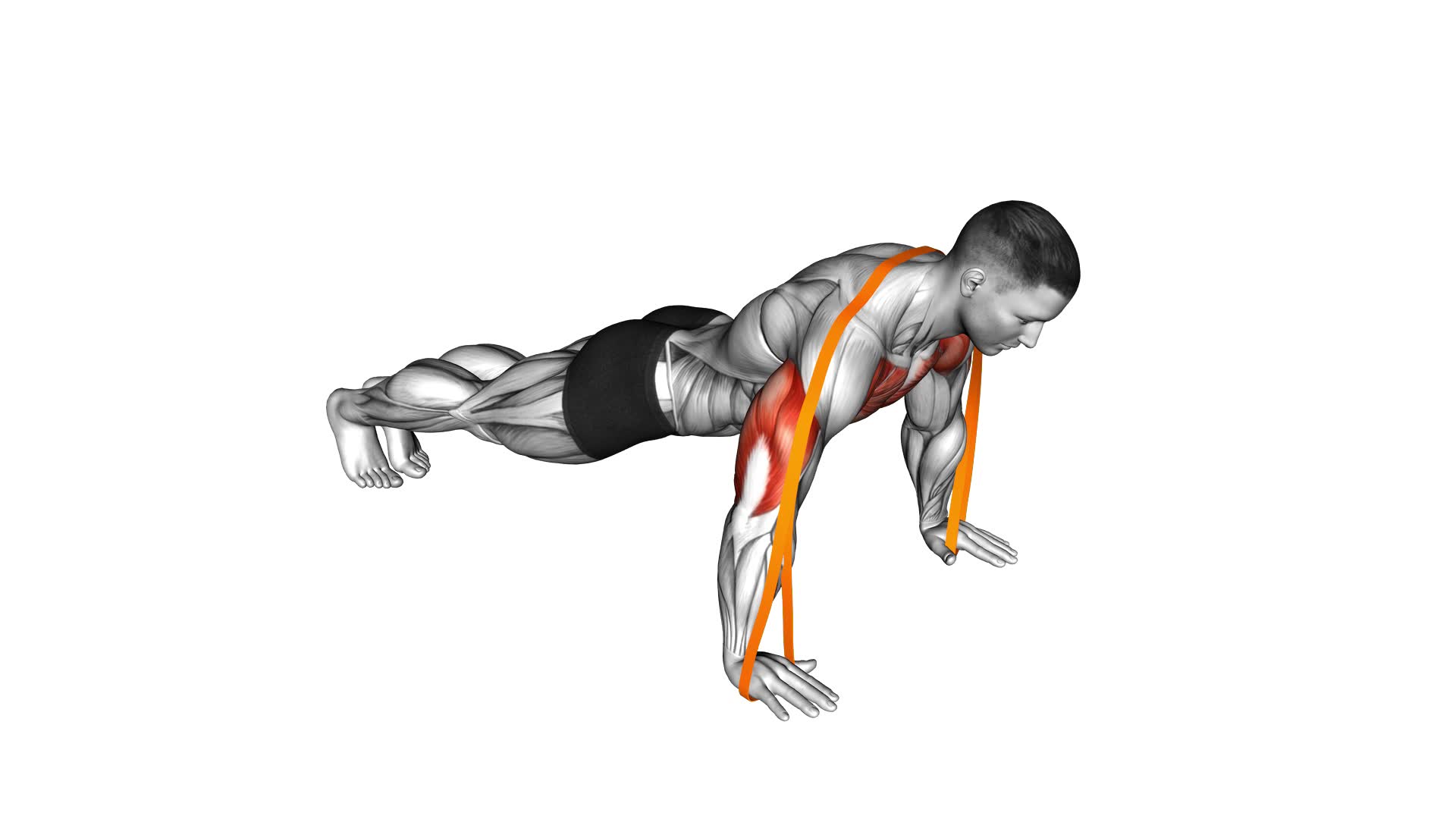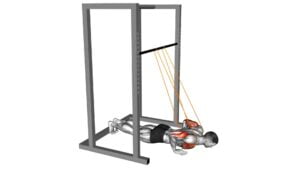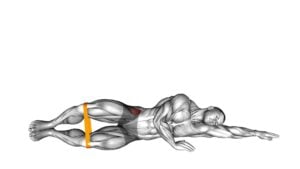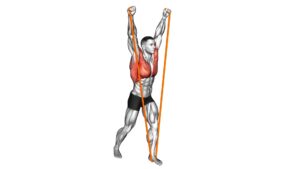Resistance Band Push-Up – Video Exercise Guide & Tips

Are you looking for a challenging and effective exercise to strengthen your upper body? Look no further than the resistance band push-up!
Watch This Exercise Video
This exercise targets your chest, shoulders, and triceps, helping you build muscle and improve overall strength.
In this video exercise guide, we'll show you the proper form and technique, as well as variations and progressions to keep you motivated and continually progressing.
Get ready to take your push-ups to the next level with the resistance band push-up!
Key Takeaways
- Resistance band push-ups increase muscle activation and provide added resistance.
- They improve shoulder stability and engage multiple muscle groups.
- Resistance band push-ups enhance overall muscle activation and build strength and endurance.
- Proper form and technique, along with modifications and progressions, are important for maximizing results and avoiding common mistakes.
Benefits of Resistance Band Push-Ups
You will experience increased muscle activation and added resistance when performing resistance band push-ups. This exercise is highly beneficial for improving shoulder stability and enhancing overall muscle activation. The resistance band adds an extra challenge to the traditional push-up, making it more effective for building strength and endurance.
When you use a resistance band during push-ups, it creates tension throughout your muscles, particularly in the shoulders. This increased tension helps improve shoulder stability by activating the muscles surrounding the shoulder joint. The resistance band also requires your muscles to work harder to push against the added resistance, leading to greater muscle activation in the chest, shoulders, triceps, and core.
By incorporating resistance band push-ups into your workout routine, you can target and strengthen the muscles that play a key role in maintaining shoulder stability. This can be especially beneficial for athletes or individuals who perform activities that require a strong and stable shoulder joint, such as throwing, lifting, or overhead movements.
In addition to shoulder stability, resistance band push-ups also provide a comprehensive upper body workout. The increased muscle activation in the chest, shoulders, triceps, and core helps build strength and definition in these areas. This exercise is a great addition to any fitness regimen, offering both functional strength and aesthetic benefits.
Proper Form and Technique
To perform the resistance band push-up with proper form and technique, start by securing the resistance band around your back and wrists. This will provide the necessary resistance to challenge your muscles and improve stability during the exercise.
Begin in a high plank position with your hands slightly wider than shoulder-width apart, keeping your core engaged and your body in a straight line from head to toe. As you lower yourself towards the ground, make sure to keep your elbows close to your body and your chest facing forward.
Push through your palms and extend your arms to return to the starting position. Remember to maintain control throughout the movement and avoid sagging or arching your back.
If you're a beginner or need to modify the exercise, you can perform the resistance band push-up on your knees instead of your toes. This will reduce the amount of weight you have to lift, making it more manageable while still engaging your upper body muscles.
As you gain strength and confidence, you can gradually progress to performing the push-up on your toes.
Now that you have mastered the proper form and technique for the resistance band push-up, let's explore some variations and progressions to continue challenging your muscles and taking your workout to the next level.
Variations and Progressions
To further challenge your muscles and continue progressing with the resistance band push-up, try incorporating different variations and progressions.
One modification you can make is to use a thicker resistance band to increase the resistance and intensity of the exercise. This will engage your muscles even more and help you build strength and endurance.
Another option is to perform the push-up with one arm while the other arm holds onto the resistance band. This won't only target your chest, shoulders, and triceps, but also improve your core stability and balance.
For those looking for advanced push-up variations, you can try the plyometric push-up with resistance bands. This explosive movement will enhance your power and speed, as well as challenge your upper body muscles in a whole new way.
Additionally, you can experiment with different hand positions such as wide grip, narrow grip, or staggered grip to target specific muscle groups and add variety to your workouts.
By incorporating resistance band modifications and advanced push-up variations, you'll continue to challenge your muscles and make progress in your fitness journey.
Now, let's move on to the next section and learn about common mistakes to avoid.
Common Mistakes to Avoid
To avoid common mistakes when performing the resistance band push-up, it's important to maintain proper form and technique throughout the exercise. One common mistake to avoid is improper alignment. Make sure your body is in a straight line from your head to your heels, with your hands directly under your shoulders. Avoid sagging or arching your back, as this can strain your lower back and decrease the effectiveness of the exercise. Another mistake to watch out for is letting your elbows flare out to the sides. Instead, keep your elbows close to your body to engage your chest muscles more effectively.
Another common mistake isn't engaging your core muscles. Your core plays a crucial role in stabilizing your body during the push-up. Remember to tighten your abs and glutes throughout the movement to maintain stability and prevent any unnecessary strain on your lower back.
Lastly, avoid rushing through the exercise. Take your time and focus on performing each rep with control and proper form. This will maximize the benefits of the resistance band push-up and help you avoid potential injuries.
Tips for Maximizing Results
To maximize your results with resistance band push-ups, focus on maintaining proper form and technique throughout the exercise. This will ensure that you're effectively targeting the muscles in your chest, shoulders, and arms.
One way to increase the resistance of the exercise is to use a thicker or stronger resistance band. This will provide more tension and challenge your muscles even further.
Another way to increase resistance is to anchor the resistance band properly. Place the band around a sturdy object, such as a door handle or a heavy piece of furniture, making sure it's secure and won't move during your workout. This will allow you to perform the exercise with stability and control.
Additionally, make sure to engage your core muscles throughout the movement. This won't only help to stabilize your body, but it will also increase the intensity of the exercise.
Remember to breathe properly and maintain a steady pace. By following these tips, you'll be able to maximize your results and achieve your fitness goals.
Keep pushing yourself and stay consistent in your workouts, and you'll see progress over time.
Frequently Asked Questions
How Long Should I Rest Between Sets When Performing Resistance Band Push-Ups?
When performing resistance band push-ups, it's important to consider how long you should rest between sets. Rest duration can vary depending on your fitness level and goals.
Generally, it's recommended to rest for 1-2 minutes between sets to allow your muscles to recover and regain strength. However, you can also experiment with shorter rest periods for a more challenging workout or longer rest periods for a more relaxed pace.
Find what works best for you and keep pushing yourself to achieve your fitness goals.
Can Resistance Band Push-Ups Help Improve My Bench Press Strength?
Resistance band push-ups can definitely help improve your bench press strength. By incorporating resistance bands into your push-up routine, you're adding an extra challenge to your upper body muscles. This helps to increase strength and power, which can directly translate to improved bench press performance.
Additionally, by progressively increasing the tension of the resistance bands, you can continue to challenge your muscles and make maximum gains in your upper body strength.
Are Resistance Band Push-Ups Suitable for Beginners?
Resistance band push-ups can be a great exercise for beginners to improve their strength. They provide additional resistance, making the exercise more challenging but still manageable.
If you're finding resistance band push-ups too difficult, don't worry! There are modifications available to make them easier. For example, you can perform push-ups on your knees or against a wall.
These alternative exercises will still target your chest, shoulders, and triceps while gradually building up your strength. Keep pushing yourself and you'll see progress in no time!
Can Resistance Band Push-Ups Help With Rehabilitation After a Shoulder Injury?
Resistance band push-ups can be beneficial for rehabilitation after a shoulder injury. They help strengthen the muscles around the shoulder joint and improve stability. Additionally, the resistance band provides support and reduces strain on the injured shoulder.
However, it's important to consult with a healthcare professional before starting any exercise program. If resistance band push-ups aren't suitable for you, there are alternative exercises like wall push-ups or modified push-ups that can still help in your rehabilitation journey.
Is It Necessary to Anchor the Resistance Band When Performing Resistance Band Push-Ups?
To perform resistance band push-ups, you might wonder if it's necessary to anchor the band.
Anchoring the band can provide added stability and resistance, making the exercise more challenging and effective.
However, if you don't have an anchor, don't worry! There are alternative exercises you can do, such as push-ups with a resistance band looped around your back.
Remember, anchoring the band isn't necessary, but it can offer additional benefits to your workout.
Keep pushing and stay strong!
Conclusion
Incorporating resistance band push-ups into your workout routine can provide a range of benefits, including increased muscle strength and stability. By maintaining proper form and technique, you can maximize the effectiveness of this exercise.
Remember to gradually progress and try different variations to challenge yourself. Avoid common mistakes such as arching your back or letting your hips sag.
With these tips in mind, you'll be on your way to achieving great results and improving your overall fitness. Keep pushing yourself!

Author
Years ago, the spark of my life’s passion ignited in my mind the moment I stepped into the local gym for the first time. The inaugural bead of perspiration, the initial endeavor, the very first surge of endorphins, and a sense of pride that washed over me post-workout marked the beginning of my deep-seated interest in strength sports, fitness, and sports nutrition. This very curiosity blossomed rapidly into a profound fascination, propelling me to earn a Master’s degree in Physical Education from the Academy of Physical Education in Krakow, followed by a Sports Manager diploma from the Jagiellonian University. My journey of growth led me to gain more specialized qualifications, such as being a certified personal trainer with a focus on sports dietetics, a lifeguard, and an instructor for wellness and corrective gymnastics. Theoretical knowledge paired seamlessly with practical experience, reinforcing my belief that the transformation of individuals under my guidance was also a reflection of my personal growth. This belief holds true even today. Each day, I strive to push the boundaries and explore new realms. These realms gently elevate me to greater heights. The unique combination of passion for my field and the continuous quest for growth fuels my drive to break new ground.



